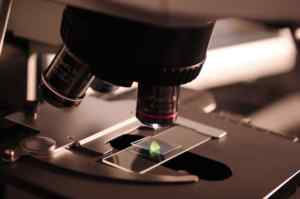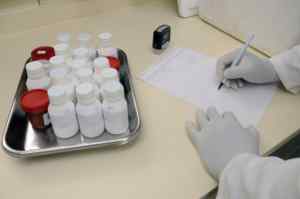 The fear of increasing one’s risk of prostate cancer has stopped some men from undergoing a vasectomy or vasectomy reversal, thanks to old ’90s research that has since been refuted. We touched upon this topic in an earlier blog post, but new research has surfaced to confirm, once again, that prostate cancer and vasectomy-related procedures are NOT correlated.
The fear of increasing one’s risk of prostate cancer has stopped some men from undergoing a vasectomy or vasectomy reversal, thanks to old ’90s research that has since been refuted. We touched upon this topic in an earlier blog post, but new research has surfaced to confirm, once again, that prostate cancer and vasectomy-related procedures are NOT correlated.
Curtin University in Western Australia recently released research in The Journal of Urology that observed 10,000 men worldwide who had undergone vasectomy reversals. The paper, spearheaded by Dr. Sean Randall of Curtin University’s Centre for Data Linkage, examined the theory that “if a vasectomy is considered a cause of prostate cancer, then vasectomy reversal should hypothetically decrease the risk of prostate cancer.”
However, Randall confirmed that his team’s studies failed to find any sort of link between vasectomy reversals and prostate cancer, thereby also concluding that there is “no clinically meaningful relationship between men who had had vasectomies and the rate of prostate cancer.”
The paper studied 684,660 men with vasectomies in Australia, Canada and the United Kingdom, including 9,754 men with vasectomy reversals, from 1972 to 2016.
Thanks to Curtin University’s research and similar studies from other institutions, the myth of increased prostate cancer risk following a vasectomy is quickly fading away. For those considering a vasectomy or vasectomy reversal, this is an extremely significant development that can help more men accurately weigh their options.
Looking for a vasectomy or vasectomy reversal consultation? Let us know! Call us at (952) 922-2151, or visit our Edina office at 6545 France Avenue South, Suite 290.
 Led by a small team of scientists from the Institute for Therapeutics Discovery and Development at the University of Minnesota, the search for a non-hormonal male birth control pill ultimately zeroed in on the toxic substance known as ouabain. Found in two types of African plants, ouabain was traditionally used as poison on hunting arrows and is sometimes medically used to treat heart arrhythmias.
Led by a small team of scientists from the Institute for Therapeutics Discovery and Development at the University of Minnesota, the search for a non-hormonal male birth control pill ultimately zeroed in on the toxic substance known as ouabain. Found in two types of African plants, ouabain was traditionally used as poison on hunting arrows and is sometimes medically used to treat heart arrhythmias. If you’re looking for a natural, inexpensive way of boosting sperm quality and overall fertility, the answer may lie within…tomatoes?
If you’re looking for a natural, inexpensive way of boosting sperm quality and overall fertility, the answer may lie within…tomatoes? 1. Walnuts
1. Walnuts 5. Dark Chocolate
5. Dark Chocolate In a landmark study from the Vasovasostomy Study Group (VVSG) published in 1991, Dr. Arnold Belker and four other expert microsurgeons examined various facets of vasectomy reversal, including the risk of birth defects. Their trial, which followed 291 children born post-vasectomy reversal, found that only three of the 291 subjects displayed birth defects. That’s a one percent birth defect rate.
In a landmark study from the Vasovasostomy Study Group (VVSG) published in 1991, Dr. Arnold Belker and four other expert microsurgeons examined various facets of vasectomy reversal, including the risk of birth defects. Their trial, which followed 291 children born post-vasectomy reversal, found that only three of the 291 subjects displayed birth defects. That’s a one percent birth defect rate.  After undergoing a
After undergoing a  Last month, we
Last month, we  You may be familiar with the term “antibodies” as “something that helps the body ward off disease,” but the notion of sperm antibodies might seem counterintuitive. After all, why would the body want to destroy perfectly good sperm?
You may be familiar with the term “antibodies” as “something that helps the body ward off disease,” but the notion of sperm antibodies might seem counterintuitive. After all, why would the body want to destroy perfectly good sperm?


